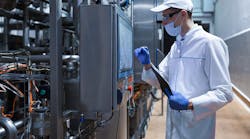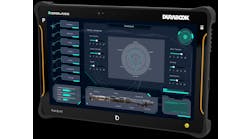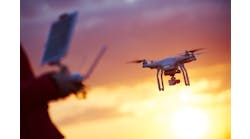Read more in the Mobility Month mini series!
In simpler times, just a few short months ago, mobile technologies like tablet PCs, smart phones, wearable interfaces and other remote connections were nice-to-have options that users could adopt or put off at their leisure. How times have changed.
Thanks to the coronavirus 2019 (COVID-19) pandemic and its epic human cost, closures, quarantines, and work-at-home and social distancing requirements, many mobile technologies have gone from optional to essential must-haves for helping users, families, organizations and companies maintain some degree of the interaction and business activity they had before the pandemic struck. Ironically, most of these mobile technologies have been available for years if not decades, but they were novelties that were often only sparsely applied. Now, they're the difference between being prepared for working remotely and scrambling to catch up.
"Pre-COVID-19 mobility meant walking around plants with tablet PCs using wireless networking, and many clients asking 'where's the return on investment (ROI)?' " says Dan Malyszko, operations director at Malisko Engineering, a system integrator in Denver, and a certified member of the Control System Integrators Association. "For us, post-COVID-19 mobility includes three main areas: dispersed teams, remote operations and remote experts.
"All personnel are important to running process industry organizations, but at the onset of the pandemic, many support resources such as plant and corporate engineers were sent home. Mobility took on a different meaning with newly dispersed teams needing to be online, collaborating on live production support for the entire day. Likewise, using AR glasses in the plant to connect to remote experts previously seemed more like a tradeshow novelty, but it's now resonating due to the unique constraints the pandemic put on essential industries. We're seeing more interest in and adoption of RealWear headsets with high-quality voice and video sharing. RealWear’s premier integration with Cisco Webex Teams allows plant-floor personnel to launch a Webex Client on the headset device to collaborate with remote experts in real-time, including the ability to snap and annotate photos."
Instant interaction
Malyszko reports his staff has been working with Cisco to implement these collaboration-centric mobile solutions at four Dairy Farmers of America plants in Zumbrota, Minn.; Ventura, Calif.; Portales, N.M.; and Schulenburg, Texas. They're adding Cisco's Webex Room Kits, DX80 video endpoints, and RealWear's hands-free HMT-1 headsets. DX80 is an all-in-one desktop collaboration unit featuring HD video, unified Webex communications features, and can act as an external display for laptops. It's a dedicated, always-on HD video communication system for control rooms, and supervisor and plant manager offices. Cisco Webex Room Kits add UHD video, clear audio and high-quality microphone to any TV display in a team space such as a maintenance shop, training room or conference room.
"These personnel already had Webex Teams clients running on their laptops to join external meetings, but are now using Webex video end-points and headsets to gather for immediate collaboration on plant-floor tasks," explains Malyszko. "However, these headsets and other devices require Wi-Fi and an outside Internet connection, both of which may not be available on the plant floor. This is driving conversations about investing in and expanding wireless, as well as bringing industrial cybersecurity to the forefront."
Malyszko adds, "We're assisting with contact tracing by using ultra-wideband radio on the plant floor, which can coexist with Wi-Fi and is usually employed for location services such as indoor asset tracking. UWB can achieve down to about 12-inch resolution positioning, though this also requires UWB anchors/receivers mounted on nearby walls and ceilings to read the tags/transmitters on the assets or individuals you're trying to track."
Malyszko reports Malisko is partnering with Sewio to use its indoor RTLS, which can track mobile equipment position, but is also reliable for tracking individuals. "Before COVID-19, we routinely received inquiries on how to add accurate location services to industrial infrastructure for tracking mobile assets, but tracking personnel never came up. Customers leaned towards RFID and Bluetooth until the challenge of contact tracing required higher accuracy positioning than those technologies could provide," says Malyszko. "UWB really is the best and most versatile technology investment for a real-time location system in an industrial environment, and we think it's a very positive sign that Apple put a UWB chip into the iPhone 11 to enable highly accurate spatial awareness to other mobile devices. If there is wider adoption in the consumer market, then industry needs to look at UWB more seriously."
To collect and correlate all the sources of data required for contact tracing, Malyszko adds that his company also partners with Splunk to quickly respond in assessing the scope of impact when there's a positive COVID-19 test at a manufacturing site. "Having the ability to search an index of digital data related to employee health and contact tracing will allow more people to return to work safely, and keep their plants and businesses running," he says. “This present situation is driving more discussions about implementing digital transformation initiatives, which ultimately involves implementing strategies to make data-driven insights. We see this as a positive outcome in an otherwise somber time."






